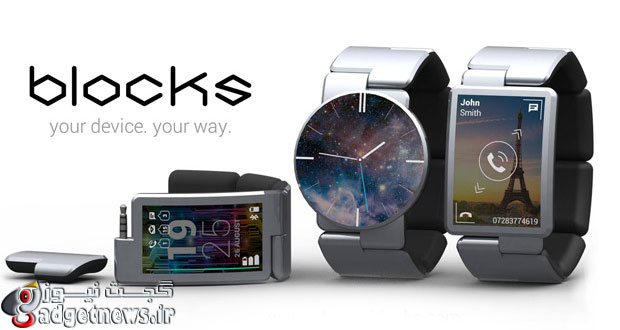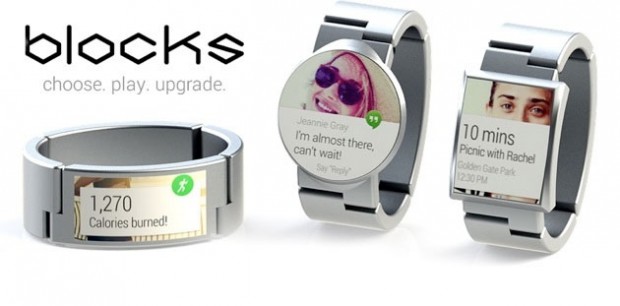سال گذشته شرکتی به نام Phone Blocks از طرح مفهومی یک ساعت هوشمند ماژولار پردهبرداری کرد. مدتی بعد از آن موتورولا (یا همان گوگل) برای اولین بار یک گوشیهای هوشمند ماژولار واقعی را معرفی کرد.این روزها ساعتهای هوشمند بسیار هیجانانگیز هستند و به نظر میرسد اگر بتوان شکل فیزیکی آنها را هم به دلخواه تغییر داد، هیجانانگیزتر هم خواهند شد.
این همان ایدهای است که شرکت فون بلاکس دارد. ساعت هوشمند این شرکت به کاربر این اجازه را میدهد تا از بین ماژولهای مختلف ارائهشده، هر کدام را که میخواهد روی ساعت خود نصب کند. به عبارت دیگر طراحی ظاهری ساعتهای هوشمند فون بلاکس تا حدود زیادی در اختیار کاربر خواهد بود. در واقع کاربر باید بتواند بعد از خریدن این ساعت، هر نوع تغییر سختافزاری و نرمافزاری را که خواست، پیادهسازی کند.
در حال حاضر فون بلاکس با همکاری اینتل و سامسونگ که تجربهی خوبی در ساخت ساعتهای هوشمند به دست آوردهاند، مشغول همکاری در مورد ساعت هوشمند ماژولار خود است.
ساعت هوشمند فون بلاکس با سیستمعامل تایزن سامسونگ کار خواهد کرد. ولی شاید جالبترین این ساعت هوشمند، امکان اتصال آن به گوشیهای اندرویدی، ویندوز فونی و حتی آیفون باشد.
این ساعت هوشمند با عنوان «بلاکس» شناخته میشود و این پروژه در آخرین دور مسابقهی ابزارهای پوشیدنی اینتل حضور دارد. امکان پیشخرید این محصول نیز از فردا برای علاقمندان در نظر گرفته شده است.
منبع : engadget
Blocks' modular smartwatch concept is ambitious to a fault
Blocks' modular smartwatch concept is ambitious to a fault
The puzzle of plastic above may not look like much (and it’s far too big to be considered wearable), but it’s been a successful proof-of-concept device. With it, the Blocks crew has confirmed its design is viable, in that all the components can communicate freely. It’s now working on miniaturizing everything so it’s wrist-friendly, though the finished product won’t look anything like the colorful, 3D-printed mock-ups we saw today, or early renders Blocks has shared previously. Instead, it’s going to have a more refined and premium appearance. Hopefully, something like:
It’s easy to grasp the potential of a modular wearable like Blocks. If you wanted insane battery life, for example, you could turn the whole band into a secondary power source. Simple fitness tracking could be done by one link containing a gyroscope and accelerometer, while another housing a heart rate monitor and blood oxygen sensor could offer richer analyses. Similarly, outdoorsy types could pair a GPS module with one packing an altimeter, thermometer and barometer. Modules with SIM-card slots and cellular radios, RFID and NFC chips, cameras and microphones — all useful features alone and in combinations. And then there’s anything third-party module makers dream up.
Software is obviously a big part of the equation, and while a platform for Blocks was being developed in-house, the team is currently experimenting with Android Wear. The final call is far from made, however, as Wear immediately cuts iOS users from the potential customer pool. That’s a pretty big deal when what you’re building is, in most use cases, a smartphone-companion device. The company is also considering separate operating system modules, so Blocks hardware could run on various platforms.
One key benefit of Google’s OS is support for different screen shapes. The plan is for Blocks to have several display options, including round, square and band-like faces, in OLED and e-ink variants (though stock Android Wear doesn’t support the latter). These display modules will also run the rest of the show, each accommodating a processor and other necessities, a Bluetooth chip and the primary battery. Naturally, they’ll be the most expensive.
The Blocks crew has a lot to refine, but it hopes to be ready to seek crowdfunding this fall, with delivery well into the following year. A basic package with all the functionality of your standard smartwatch is expected to be $200-250/£150-200, and a premium tier with additional modules would be a little pricier at $300-350/£250-300 (bear in mind these are rough estimates). The concept itself is pretty sound, in the same way a modular smartphone looks to be a viable, albeit niche proposition. However, there’s always the chance of thinking too big. Doing too much. Blocks is attempting to create a hardware platform from scratch, both building modules and hoping to attract others to do the same. Multiple face designs, display technologies and even operating systems complicate the situation further, not to mention the need for compatible apps and third-party developer support. Needless to say, it’s an ambitious undertaking.
 گجت نیوز آخرین اخبار تکنولوژی، علم و خودرو
گجت نیوز آخرین اخبار تکنولوژی، علم و خودرو 







